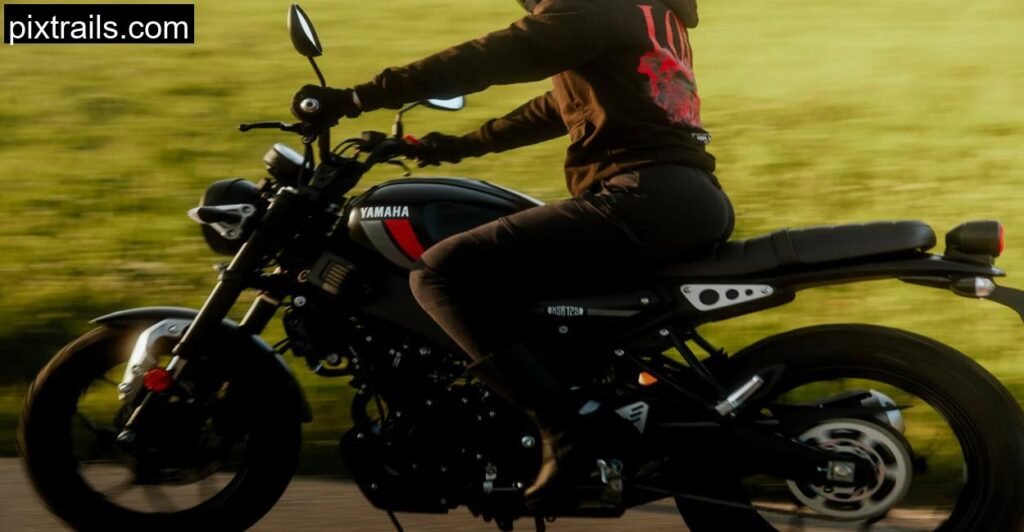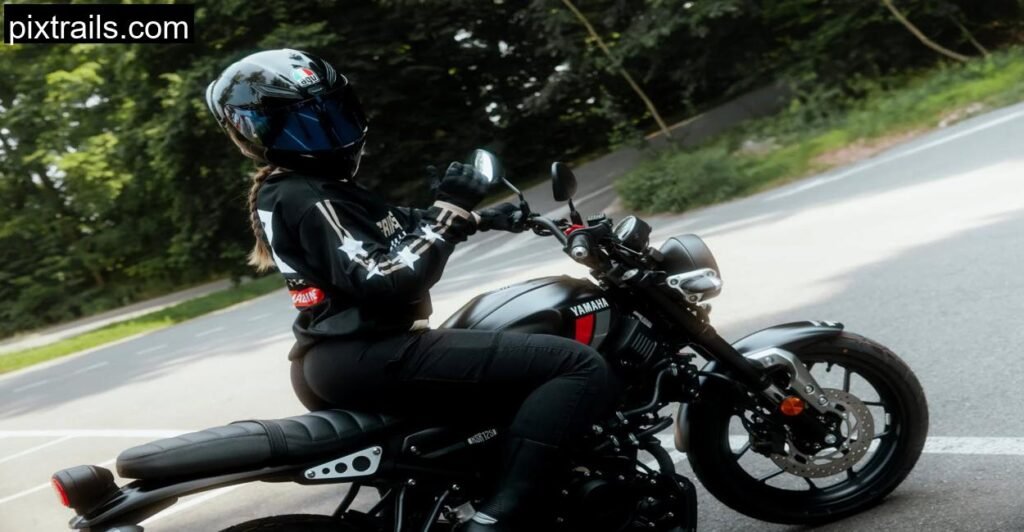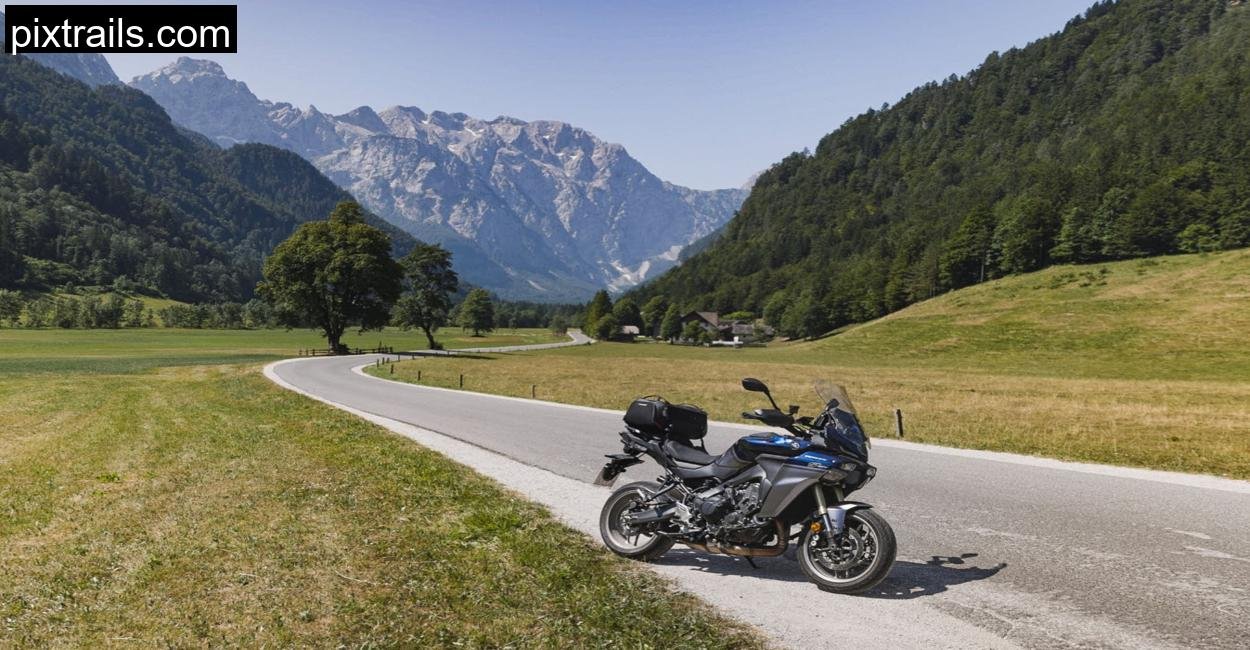Bressanone, Italy. A town that feels like it was painted into existence, where cobbled streets twist between medieval buildings and the Alps rise like a protective wall on the horizon. The air smells faintly of pine and espresso, and everywhere you look, there’s a postcard waiting to happen.
This is where my journey with the Yamaha XSR125 began. And when I say “journey,” I don’t just mean the miles on the odometer. I mean the tentative, slightly nerve-wracking process of discovering what it feels like to ride your very first motorcycle in real-world conditions, traffic, uneven streets, and all.
I’m 163 cm tall, a newly licensed rider, and until recently, my motorcycling experience could be summed up as “riding in a parking lot with butterflies in my stomach.” So, testing the Yamaha XSR125 here in Bressanone was not just about the bike, it was about finding out if I could really belong in this world of two wheels.
Before I dive into my story, here’s a quick look at what this little retro-inspired naked bike brings to the table.
Yamaha XSR125 – Technical Specifications
The specifications listed are officially published by the Yamaha’s and sourced from their website. We ensure accuracy by relying on the latest manufacturer data.
| Specification | Detail |
| Engine Type | 124cc, liquid-cooled, 4-stroke, single-cylinder |
| Power Output | 11 kW (14.8 hp) @ 10,000 rpm |
| Torque | 11.5 Nm @ 8,000 rpm |
| Transmission | 6-speed manual |
| Frame Type | Steel diamond frame |
| Suspension (Front) | 37 mm upside-down telescopic forks |
| Suspension (Rear) | Mono-shock |
| Brakes (Front) | 267 mm disc |
| Brakes (Rear) | 220 mm disc |
| Seat Height (Standard) | 815 mm |
| Seat Height (Test Bike) | 795 mm (with Yamaha lowering kit) |
| Weight (Ready to Ride) | ~140 kg |
| Fuel Tank Capacity | 11 litres |
| Wheels | 17-inch aluminium |
| Tyres | 110/70-17 (front), 140/70-17 (rear) |
| ABS | Single-channel |
| Styling | Neo-retro “Sport Heritage” design |
First Impressions: Meeting the XSR125 in the Heart of Bressanone
There’s something slightly intimidating about your first real bike being wheeled toward you in the middle of a charming Italian square. The Yamaha XSR125 looked compact compared to the bigger bikes I’d seen earlier in the day, but to me, it still felt like a machine with presence. The neo-retro styling, round LED headlight, sculpted tank, simple but classy paintwork, stood out beautifully against the Alpine backdrop.
I noticed two things immediately. First, the weight, or lack of it. At just around 140 kg fully fueled, it felt approachable. Second, the seat height. Even with the lowering kit fitted, my feet didn’t quite plant flat on the ground. I was on the tips of my boots, which is not an ideal start when your confidence is still fragile.
Thankfully, I had come prepared with Daytona Lady Pilot GTX boots. These boots add up to 6 cm in sole height, and that combination of lowering + footwear made a huge difference. I could now get almost both feet down with just a slight lean. That small adjustment changed my entire mental state from “please don’t let me tip over” to “okay, maybe I can do this.”
Learning the Ropes: Low-Speed Riding in Town

If you want to know whether a bike is beginner-friendly, don’t just take it to a quiet back road, drop it straight into city traffic. In Bressanone, this meant negotiating narrow cobblestone streets, sudden tourist crossings, and the occasional delivery van parked half in the road.
The XSR125’s light weight and slim profile were my saving grace here. The clutch pull was light, gear shifts were precise, and the bike tracked where I pointed it without any drama. At very low speeds, balance was easy to maintain, something I had struggled with on taller, heavier bikes during training.
That said, the 125cc engine does require a little finesse. It doesn’t have much low-end torque, so you need to work the clutch and throttle together smoothly when pulling away. At first, this made me nervous, especially when a car was waiting impatiently behind me. But the flip side is that the bike’s gentle power delivery meant I never feared an accidental wheelie or sudden surge. It’s forgiving, which is exactly what a beginner needs.
Out on the Open Road: Where the XSR125 Shows Its Limits (and Strengths)
Leaving the town and heading toward the rolling roads above Bressanone was like exhaling after holding my breath. The scenery opened up into sweeping mountain views, and the Yamaha felt happiest cruising between 50–80 km/h. The gearbox was smooth, the seating position relaxed, and the upright handlebars meant I could soak in the views without straining my neck.
However, at higher speeds, the limitations of a 125cc engine show. At 80 km/h, overtaking slower vehicles requires planning, and there’s no quick burst of acceleration to rely on. On a road where a tractor blocked the lane, I found myself waiting for a much bigger gap than an experienced rider on a larger bike would need.
Still, this isn’t a flaw, it’s just physics. And for a beginner like me, the lack of intimidating power was reassuring. The XSR125 encourages smooth, thoughtful riding rather than aggressive moves.
Ergonomics and Comfort: Designed for Everyday Riding
The XSR125’s ergonomics suit a wide range of riders, but for someone my height, the lowered suspension made it much easier to live with. The narrow seat allowed my legs to reach down without stretching too far, and the upright seating position meant no wrist strain even after a few hours in the saddle.
The suspension felt firm but not harsh, soaking up cobblestones better than I expected. The brakes were predictable, with enough stopping power to feel safe without being grabby. One minor gripe was the gear shifter position, with my thicker-soled boots, I found it slightly awkward to get my toe under the lever. Adjustability here would be a welcome improvement.
Sound-wise, the exhaust note was a pleasant surprise. It has a deeper, richer tone than I expected from a 125, giving the bike a “real motorcycle” feel without being loud or antisocial.
Styling and Character: Riding Something You’re Proud Of

Aesthetics might not be the most important factor in a beginner’s bike, but they do matter. The XSR125’s retro-inspired “Sport Heritage” design drew compliments even from non-riders. There’s something satisfying about parking up next to bigger bikes and still getting a nod of approval for style.
The round LED headlamp, stitched seat, and minimalistic tail give it a timeless look, while the modern LCD dash keeps it practical. For me, the styling added to the pride of ownership, and that’s important when you’re still building your confidence as a rider.
Conclusion: A Confidence-Building First Motorcycle
By the end of my time with the Yamaha XSR125 in Bressanone, I realised something important: this bike doesn’t just teach you how to ride, it teaches you how to enjoy riding. It’s approachable without being dull, stylish without being impractical, and forgiving without feeling like a toy.
For shorter riders, the lowering kit (and perhaps some boot assistance) is almost essential, but once that’s sorted, the bike feels welcoming. It’s light, predictable, and enjoyable at everyday speeds.
No, it’s not built for blasting down motorways or carving up high-speed passes. But as a companion for learning the craft of motorcycling, and looking good while doing it, the Yamaha XSR125 hits the sweet spot.
Is the Yamaha XSR125 good for short riders?
Yes, especially with the lowering kit and possibly taller boots. Without these, riders under around 170 cm might struggle to get both feet flat on the ground.
How fast can the Yamaha XSR125 go?
It can reach around 110–115 km/h, but it’s most comfortable between 50–90 km/h.
Does Yamaha XSR125 feel underpowered?
Only when overtaking at higher speeds. Around town and on twisty roads, the power is adequate and beginner-friendly.










